Anfield has existed for 140 years, and over that time it has undergone significant changes in regards to appearance and even its owners.
Having been built in 1884, Anfield was originally the home of Everton and did not house Liverpool until the club’s formation in 1892.
In the 140 years since, the stadium has drastically evolved and is unrecognisable from what it once was.
It is one of the most legendary stadiums in world football and holds a special place in the hearts of so many around the world.
Here, we go back in time to see how Anfield has changed throughout the years.
The Kop expansion, 1928
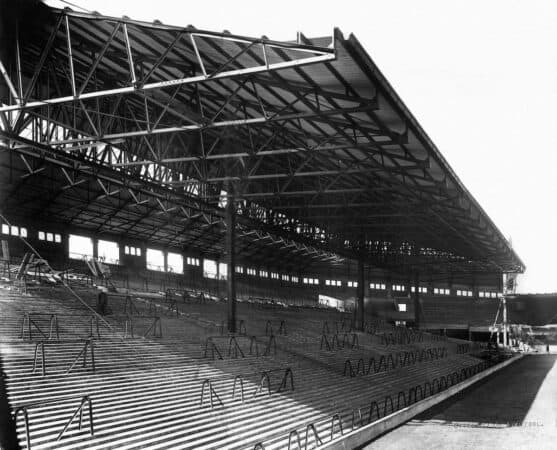
When the Kop was originally opened in 1906, it was 100 concrete steps, measuring 394 feet long, 135 feet wide and 50 feet in height.
In 1928, a significant expansion took place to allow for a roof and 30,000 fans to stand and watch the Reds, who were managed by Matt McQueen at the time.
Shankly’s arrival
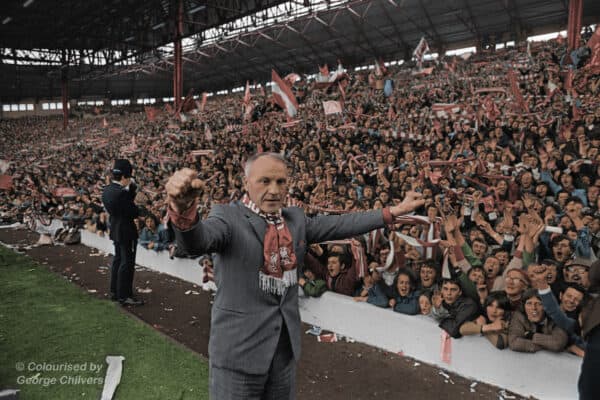
The year 1959 saw the appointment of the great Bill Shankly, a few years after floodlights had been installed at the ground and just before Anfield would undergo another makeover.
Between 1963 and 1973, the Kemlyn Road Stand, now known as the Sir Kenny Dalglish Stand, and the Main Stand both underwent redevelopment.
1960s development

There were a number of upgrades around Anfield in the 1960s, including to the Kemlyn Road Stand – which we know in present day as the Sir Kenny Dalglish Stand.
The Kop, meanwhile, proved an amazing sight as fans packed out the stand and swayed before and during matches – you can see below how it looked in 1966:

So very different from its modern-day counterpart.
Main Stand gable
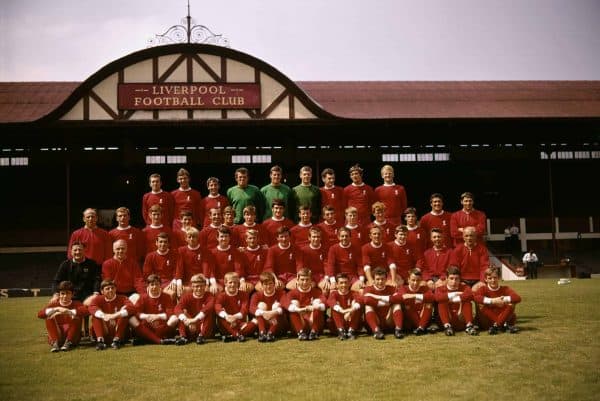
As with most football grounds in this era, the Main Stand had a grand-looking gable that existed in some form from 1895 until 1973.
It was removed when the old Main Stand was demolished and a new one was constructed in 1973. At this time, the pylon floodlights were pulled down and new lights were installed along the top of the Kemlyn Road and Main Stands.
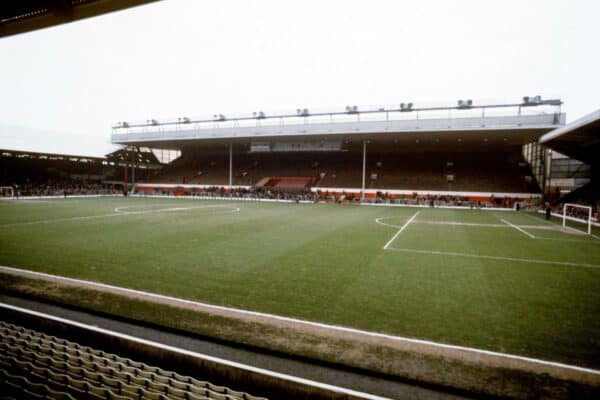
The Main Stand would not undergo any further significant changes until 2016.
The old Boot Room
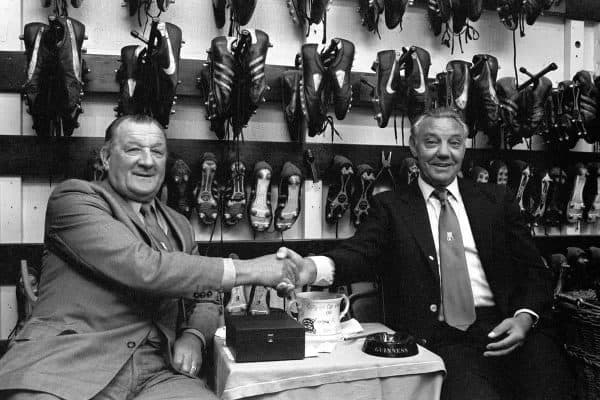
The departure of Shankly saw Bob Paisley assume the top job in 1974, where a new era of illustrious success was to follow.
From the 1960s to 1990s, the Boot Room was a meeting place where the Liverpool coaching staff would meet to discuss the team, tactics and ways of defeating their next opponent.
This Is Anfield sign

The famous This Is Anfield sign in the stadium’s tunnel holds a special place in the club’s history. It was first installed by Bill Shankly, though the concept came from a groundsman.
The sign seen here behind Paisley was the second version to take its place and remained in place until 1998.
It would not be seen until 2012 after a third version took its place, but it’s now back where it belongs – although the tunnel has certainly changed following the Main Stand redevelopment.
Flagpole Corner, 1980
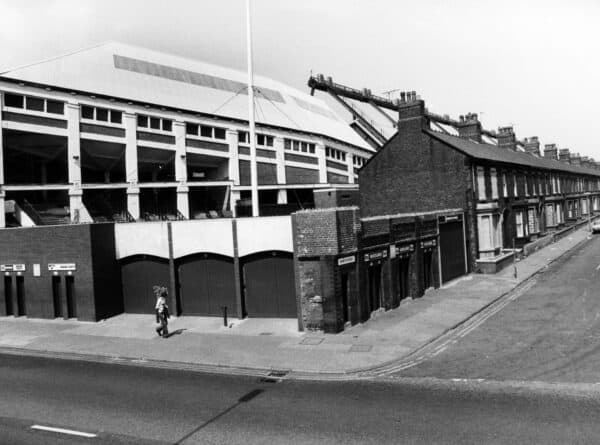
Flagpole Corner has been an Anfield meeting point for generations of Liverpool supporters.
Situated at the Walton Breck Road/Kemlyn Road junction (now the corner of the Kop and Sir Kenny Dalglish stands), the flagpole usually sees a Liver Bird flag flying high in the sky.
Shankly Gates

In 1982, the Shankly Gates came to be. They were formally unlocked by his widow, Ness, 11 months after the legendary manager passed away.
They did move location following the Main Stand construction in 2016, moving further down Anfield Road to the entrance to the Sir Kenny Dalglish Stand car park.
Anfield from above, 1989

You may notice the coloured block of seats at the Anfield Road End, this was Paisley’s doing.
The legendary manager watched the reserves at Anfield and found the red shirts got lost amid all the red seats, and thus different coloured seats would help to see the players.
Kemlyn/Centenary, 1992
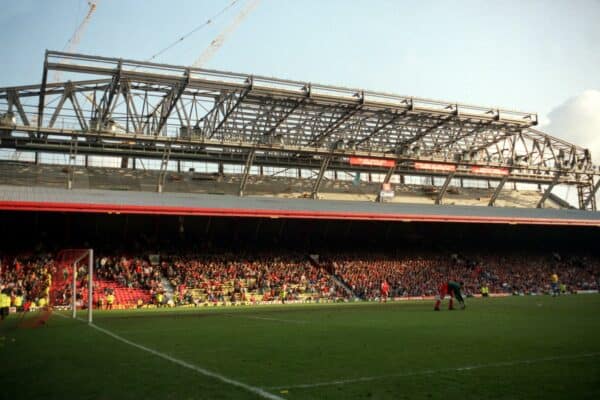
In the 1991/92 season, it was time to add a second tier onto the Kemlyn Road Stand, later known as the Centenary Stand – it officially opened in September 1992.
It would later become the Sir Kenny Dalglish Stand.
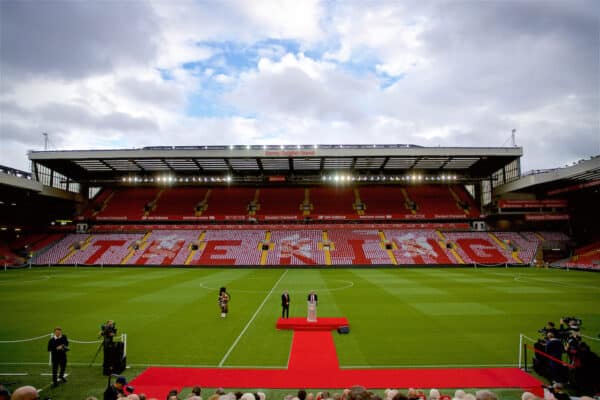
A fitting tribute to the king.
Final day of the Kop, 1994
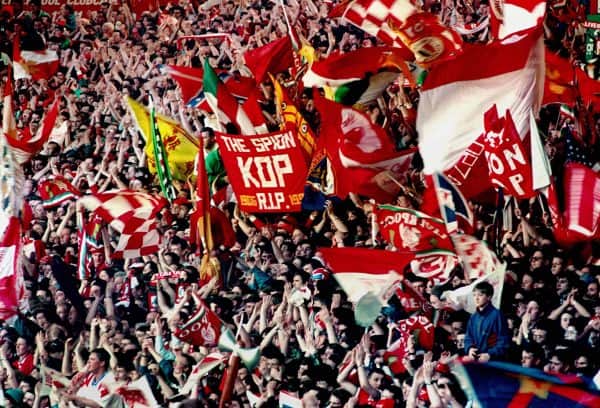
The Kop, of course, underwent a significant change after the Taylor Report called for football stadiums’ standing terraces to be replaced with all-seater stadiums following the tragic events at Hillsborough.
The 1993/94 campaign would be its last and the occasion was marked with an emotional send-off.

As you can see, above, in 1996, the Kop would now be an all-seater.
Anfield Road End changes, 1997

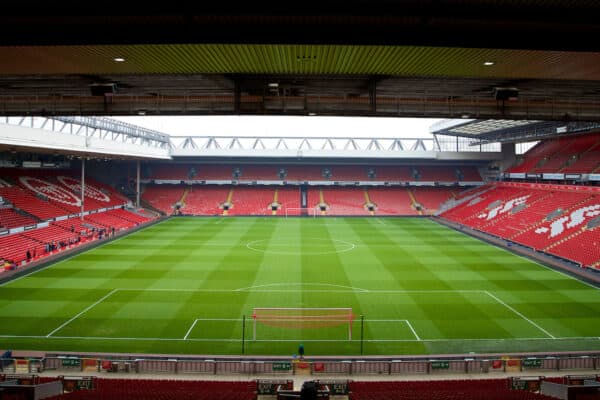
In 1997, an upper tier was added to the Anfield Road End, boosting capacity to 9,074 – although it did deliver some of the worst letterbox views!
It remained in place for over 25 years before the latest expansion under FSG.
Rebuilding the Main Stand, 2015

After owners FSG decided to remain at Anfield instead of building a new stadium in Stanley Park, work started on demolishing the old Main Stand in favour of a new three-tier stand.
The end product was simply stunning, increasing the stadium’s capacity to just over 54,000.


It was a move from FSG that reflected Liverpool’s on-field ambitions with those off it.
The new tunnel, 2016

The redevelopment of the Main Stand also saw a freshening up for the famous Anfield tunnel.
Previously a tight space with steps down, and then up to the pitch, the tunnel area is now on the same level as the playing surface and a lot more spacious – although it is not centred with the halfway line.
The famous This Is Anfield sign remains above the main entrance to the pitch.
Anfield Road End expansion, 2021-2024

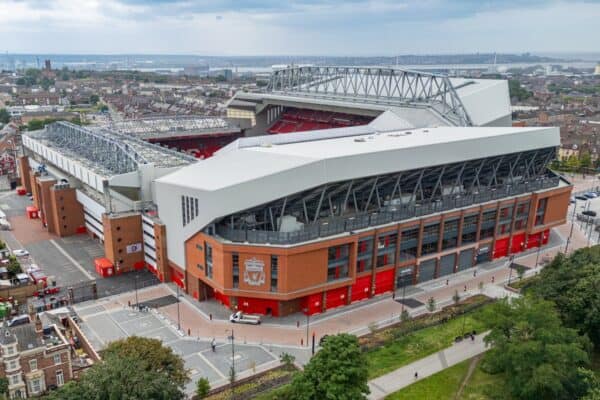
Anfield dominates the skyline and will continue to do so after the new Anfield Road expansion, which started in 2021 and all but finished in 2024.
The stadium’s capacity has risen to an incredible 61,000, making it the fourth biggest in the Premier League.

Just look at it. What a transformation from a one-tier stand to one that can now hold around 16,000 supporters!
One hundred and forty years of incredible memories, and there are so many more to come. We have been and continue to be very blessed to be able to call Anfield home.



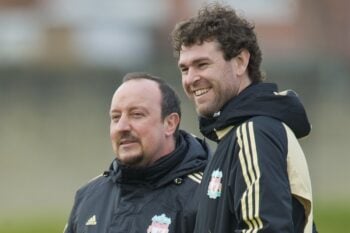


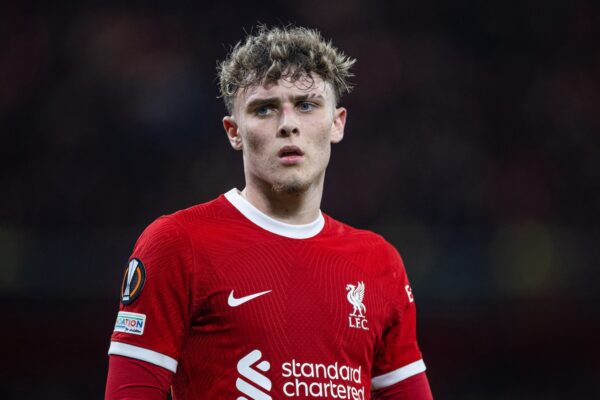





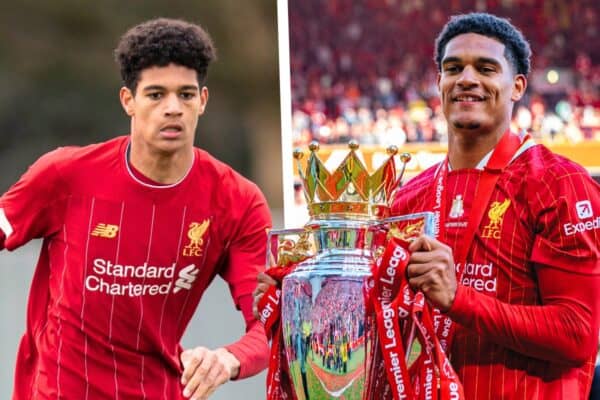






Fan Comments